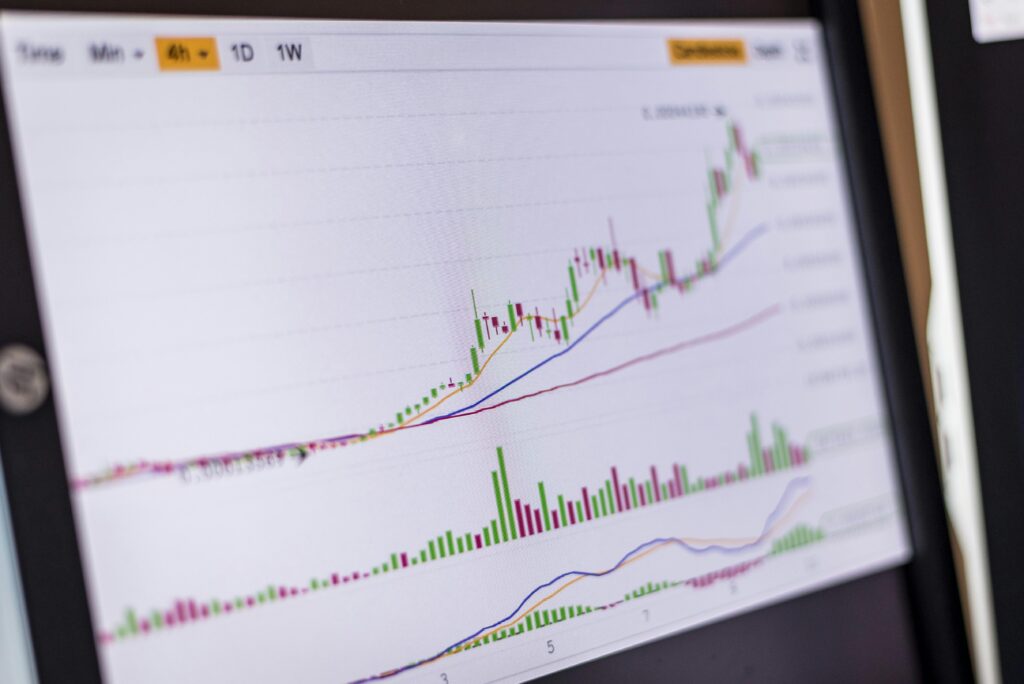What is technical analysis and how to use it to invest?
Technical analysis is a method of evaluating statistical trends in trading activity, usually involving price movements and volume. It is used to identify trading and investment opportunities. Unlike fundamental analysis, which attempts to evaluate a security’s value based on financial information such as sales and earnings, technical analysis focuses on price and volume to draw conclusions about future price movements. – Technical analysis is used to evaluate price trends and patterns, thereby identifying potential investment and trading opportunities. – Technical analysts believe that past trading activity and a security’s price changes can be valuable indicators of a security’s future price movements – Technical analysis can be compared to fundamental analysis, which focuses on a company’s financials rather than historical price patterns or stock trends. – Technical analysis was introduced by Charles Dow.
Understanding technical analysis
Technical analysis is used to examine how supply and demand for a security affect changes in price, volume and implied volatility. It assumes that past trading activity and price changes for a security can be valuable indicators of a security’s future price movements when paired with appropriate investment or trading rules. The various charting tools of technical analysis are often used to generate short-term trading signals. They can also help to improve the evaluation of a security’s strength or weakness relative to the broader market or one of its sectors. This information helps analysts improve their overall valuation estimation. TA as we know it today was first introduced by Charles Dow as the Dow Theory in the late 19th century. Several notable scholars including William P. Hamilton, Robert Rhea, Edson Gould, and John Magee further contributed to the Dow theory. Nowadays, technical analysis has evolved to include hundreds of patterns and signals developed through years of research.
How technical analysis is used
Professional analysts often use TA in conjunction with other forms of analysis. Traders may make decisions based solely on price charts for a security and similar statistics. But practicing equity analysts rarely limit their research to fundamental or technical analysis alone. Technical analysis can be applied to any security with historical trading data. This includes stocks, futures, commodities, fixed income securities, currencies, and more. In fact, technical analysis is prevalent in commodity and forex markets where traders focus on short-term price movements. Technical analysis attempts to predict the price movement of virtually any tradable instrument that is generally subject to forces of supply and demand. Some see technical analysis as simply the supply and demand forces reflected by the market price movements of a security. Technical analysis most commonly concerns price changes, but some analysts track numbers other than just price, such as trading volume or open interest.
Indicators for TA
Hundreds of patterns and signals have been developed by researchers to support trading with technical analysis. Technical analysts have also developed many types of trading systems to help them anticipate and trade price movements. Some indicators focus primarily on identifying the current market trend, including support and resistance areas. Others focus on determining the strength of a trend and the likelihood of its continuation. Commonly used technical indicators and chart patterns include trend lines, channels, moving averages and momentum indicators. In general, technical analysts look at the following broad types of indicators: – Price trends – Chart patterns – Volume and momentum indicators
– Oscillators
– Moving averages – Support and resistance levels
Underlying assumptions of technical analysis
Technical analysis tries to decipher the market sentiment behind price trends by looking for price patterns and trends. Charles Dow released a series of editorials discussing technical analysis theory. He had two basic assumptions that continue to form the framework for trading technical analysis. – Markets are efficient with values representing factors that affect a security’s price. – Even random market price movements appear to move in identifiable patterns and trends that tend to repeat over time.3 Today, the field of technical analysis builds on Dow’s work. Professional analysts typically accept three general assumptions: 1. The market discounts everything: Technical analysts believe that everything from a company’s fundamentals to broad market factors to market psychology is already priced into a stock. The Efficient Markets Hypothesis (EMH) draws a similar conclusion about prices. All that remains is the analysis of price movements, which technical analysts see as the product of supply and demand for a particular stock. 2. Price movements in trends: Technical analysts expect that prices, even in random market movements, will exhibit trends regardless of the time frame observed. In other words, a stock price is more likely to continue a previous trend than it is to move erratically. Most technical trading strategies are based on this assumption. 3. History tends to repeat itself: The repetitive nature of price movements is often attributed to market psychology, which tends to be highly predictable and based on emotions such as fear and excitement. Technical analysis uses chart patterns to analyze these emotions and subsequent price movements to understand trends. Although many forms of technical analysis have been used for more than 100 years, they are still believed to be relevant because they illustrate patterns in price movements that often repeat themselves.
Fundamental analysis vs. technical analysis
Fundamental analysis and technical analysis, the major schools of thought when it comes to approaching the markets, are at opposite ends of the spectrum. Both methods are used to examine and predict future trends in stock prices, and like any investment strategy or investment philosophy, both have their proponents and detractors.
Fundamental analysis
Fundamental analysis is a method of evaluating securities by trying to measure the intrinsic value of a stock. Fundamental analysts study everything from the overall economy and industry conditions to the financial position and management of companies. Revenues, expenses, assets, and liabilities are all important characteristics of fundamental analysis that help analysts determine the true value of a company.
Technical analysis
TA differs from fundamental analysis in that the price and volume of the stock are the only inputs. The core assumption is that all widely known fundamental factors have been included in the price; therefore, there is no need to pay much attention to them. Technical analysts do not attempt to measure a security’s intrinsic value, but instead use stock charts to identify patterns and trends that suggest how a stock’s price will move in the future.
Limitations of technical analysis
1. for some analysts and academic researchers, the EMH shows why no actionable information exists in historical price and volume data. But by the same reasoning, business fundamentals should not provide actionable information either. These views are known as the weak form and semi-strong form of EMH. 2. Another criticism of technical analysis is that history does not repeat itself exactly, so price pattern study is of dubious importance and can be ignored. Prices seem to be better modeled as a random walk. 3. A third criticism of technical analysis is that it works in some cases but only because it constitutes a self-fulfilling prophecy. For example, many technical traders will place a stop-loss order below the 200-day moving average for a particular company. If a large number of traders have done so and the stock reaches this price, there will be a large number of sell orders, which will push the stock price down, confirming the movement that traders expected. Then, other traders will see the price decrease and sell their positions, reinforcing the strength of the trend. This short-term selling pressure may be considered self-fulfilling, but it will have little bearing on where the asset’s price will be weeks or months from now. In summary, if enough people use the same signals, they can cause the movement that the signal predicted. But in the long run, this single group of traders cannot drive the price.
What assumptions do technical analysts make?
Professional technical analysts usually assume three things. First, the market discounts everything. Second, prices, even in random market movements, will exhibit trends no matter what time frame is observed. Third, history tends to repeat itself. The repetitive nature of price movements is often attributed to market psychology, which tends to be highly predictable.
What is the difference between fundamental and technical analysis?
Fundamental analysis is a method of evaluating securities by attempting to measure the intrinsic value of a stock. The core assumption of technical analysis, on the other hand, is that all known fundamental factors are included in the price; therefore, there is no need to pay much attention to them. Technical analysts do not attempt to measure the intrinsic value of a security, but instead use stock charts to identify patterns and trends that may suggest how the security’s price will move in the future.
How can I learn technical analysis?
Your first step is to learn more about investments, shares, markets and finance. This can be done through books, online courses and materials, and in-person lessons. Once you understand the basics, you can start studying technical analysis. Technical analysis is a long-standing method of analyzing price and volume data for securities to determine future price action. This data is usually displayed on charts. Investors and professional traders apply a variety of technical indicators to these price and volume charts to draw conclusions and make decisions about entry and exit points for trades.
About the Vikingen
With Vikingen’s signals, you have a good chance of finding the winners and selling in time. There are many securities. With Vikingen’s autopilots or tables, you can sort out the most interesting ETFs, stocks, options, warrants, funds, and so on. Vikingen is one of Sweden’s oldest equity research programs.
Click here to see what Vikingen offers: Detailed comparison – Stock market program for those who want to get even richer (vikingen.se)













